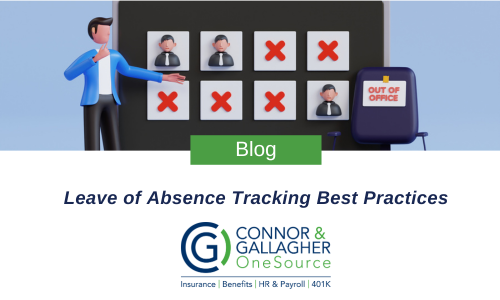Leave of absence tracking can be an overwhelming process for both employees and employers. Without clear processes and tools in place, communication can break down and important details may be missed. To support both HR teams and employees, here are best practices for effective leave tracking.
1. Have a Centralized Intake Process for Both Paid and Unpaid Leaves
- Designate a primary HR contact who manages all leave-related questions and processes.
- Maintain consistent and proactive communication with employees on leave to ensure they feel supported and informed throughout the process.
- Create a standard intake form or checklist to streamline requests and ensure no details are missed.
2. Use the Same Vendor to Track Leaves (STD, FMLA, LTD)
- Consolidating leave tracking under one vendor simplifies the process for employees and HR teams.
- One login and portal for employees to use.
- Central place to report new leaves or updates to existing ones.
- Vendors that handle multiple types of leaves can provide better visibility into overlapping leave types and reduce compliance risks.
3. Integrate with Health and Absence Management Systems
- Connect leave tracking with systems like your benefits platform, payroll, or health and wellness programs.
- Integration reduces duplicate work, prevents errors, and improves coordination between departments.
4. Leverage Reporting Capabilities
- Regularly run reports to identify leave trends, spot potential compliance issues, and make data-driven decisions.
- Use reporting to monitor leave balances, durations, reasons for leave, and return-to-work timelines.
5. Implement an Active Return-to-Work (RTW) Program
- A structured RTW program helps employees reintegrate into the workplace after a leave of absence.
- Provide transitional work schedules or duties when appropriate.
- Offer check-ins or support resources to ease the adjustment.
- A well-designed RTW program can improve employee retention, morale, and productivity.
Final Thoughts
Leave tracking doesn’t have to be scary. With the right systems, communication strategies, and support tools in place, both HR teams and employees can navigate the leave process smoothly and confidently.
Questions? Contact us at info@GoCGO.com.

The views expressed by the authors on this website do not necessarily reflect the views of the website owners, operators, or any affiliated organizations. This blog is for educational and/or informational purposes only and does not constitute tax, financial, or legal advice.
While we’ve done our best to provide accurate and current information at the time of writing this blog, the information within this article is not guaranteed to be complete, correct, timely, current or up-to-date. Similar to any printed materials, the information may become out-of-date. The Authors undertakes no obligation to update any Information on the Site; provided, however, that the Authors may update the Information at any time without notice in the Authors’ sole and absolute discretion. The Authors reserve the right to make alterations or deletions to the Information at any time without notice.






